Silk fabric, with its luxurious texture and rich cultural history, remains one of the most coveted materials worldwide. Whether for high-end fashion, home décor, or specialty items, finding a reliable silk fabric manufacturer is crucial for ensuring both quality and cost-efficiency. In China, where silk production has thrived for centuries, many manufacturers promise the perfect balance of tradition, quality, and innovation. However, the key question for businesses is: Which of these manufacturers stand out for their quality, service, and customization?
In this article, we will explore 20 of the best silk fabric manufacturers in China that provide high-quality products, competitive pricing, and customization options tailored to your business needs. As we delve into the top silk fabric producers, we’ll provide insights into their services, customization capabilities, and industry reputation. Whether you’re a fashion designer looking for premium fabrics or a business seeking bulk silk sourcing, this guide will help you navigate the market and find a trusted partner.
What Are the Leading Silk Fabric Manufacturers in China?
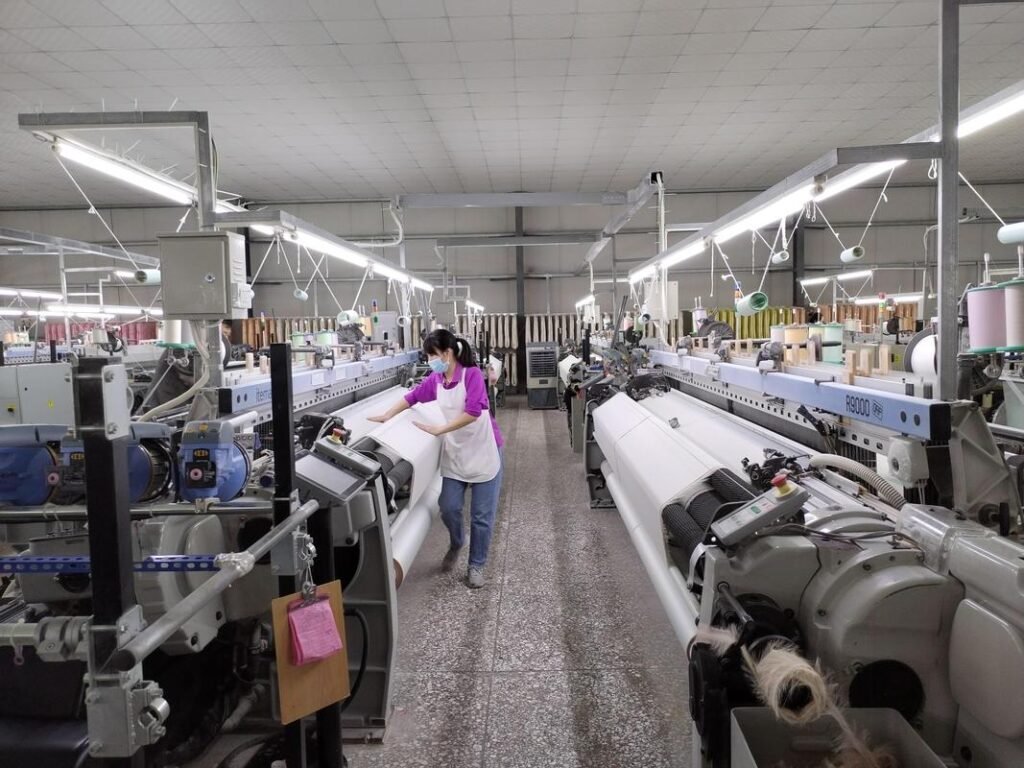
When sourcing silk fabrics, understanding who the top manufacturers are and what sets them apart is essential. China, known as the world’s largest producer of silk, boasts a diverse range of manufacturers catering to various markets. From luxury fashion houses to affordable textile suppliers, China offers an extensive pool of manufacturers to choose from.
Leading silk manufacturers in China have built their reputations on producing high-quality silk fabrics including mulberry silk, tussah silk, and wild silk. These manufacturers utilize both traditional and modern weaving techniques, ensuring they meet the diverse needs of their clients, from fashion designers to home textile brands. Quality control is a key component of their operations, with strict measures in place to guarantee that each piece of fabric meets international standards for color fastness, texture, and durability.
Some of the most well-known and respected manufacturers include Szoneier Fabrics, Jiangsu Shengze Silk Group, and Suzhou Silk Co. Ltd. These companies are known for their vast product lines, consistent quality, and ability to cater to global markets. Many of these manufacturers have extensive experience working with well-established luxury fashion houses and home textile brands.
For example, Szoneier Fabrics, a prominent player in the silk manufacturing industry, offers a wide variety of silk types and provides custom design services. This allows clients to have tailored products that match their specific requirements with precision and quality.
Key Characteristics of Leading Manufacturers:
When selecting a silk fabric manufacturer, here are some key characteristics that the top players in the market share:
High-Quality Materials
Leading manufacturers focus on producing premium mulberry silk, considered the finest type of silk. This silk guarantees superior texture and sheen, making it highly sought after for luxury fashion products. Wild silk and tussah silk are also used for more rustic and eco-friendly fabrics, each offering a unique texture and appeal.
Customization Services
Top manufacturers provide customization services, including:
- Dyeing: Customized color matching to specific Pantone shades or unique fabric dyeing techniques.
- Printing and Embroidery: Providing intricate designs, logos, or patterns tailored to customer needs.
- Textile Finishing: Offering services like gloss, matte, or specialized finishes to give fabrics their desired appearance.
These services allow businesses to offer exclusive, one-of-a-kind silk products, which is crucial for fashion designers and boutique stores.
Competitive Pricing
China’s large-scale operations and strong production capabilities allow leading manufacturers to offer competitive pricing. Because of the country’s vast production capacity and economies of scale, manufacturers can provide high-quality silk at competitive rates, making it an ideal choice for companies that want to balance quality and cost.
- Small Orders: Many manufacturers now cater to low MOQ (Minimum Order Quantities), making it possible for smaller businesses to test new designs without committing to large quantities.
- Bulk Discounts: For larger orders, the price per unit is significantly reduced, allowing brands to take advantage of bulk production savings.
Sustainability Focus
Sustainability is becoming a growing priority in the silk industry. Leading manufacturers are increasingly adopting eco-friendly practices such as:
- Using natural dyes: Avoiding toxic chemicals by using eco-friendly dyes for coloring silk.
- Water and energy efficiency: Incorporating sustainable practices in production to minimize water and energy consumption.
- Ethical production: Ensuring fair treatment of workers and reducing the environmental impact of silk production.
Many luxury brands now prioritize sustainable production, making it a valuable consideration when selecting a supplier.
Case Study:
Suzhou Silk is one of the most prominent and long-established silk manufacturers in China. They have successfully catered to the international market for decades and have built a strong reputation for their meticulous silk weaving techniques and color reproduction capabilities. Suzhou Silk specializes in various types of silk, including mulberry and wild silk, which they weave using both traditional and modern machinery. Their products are known for their precision, color consistency, and durability.
By combining traditional craftsmanship with state-of-the-art machinery, Suzhou Silk ensures a high level of precision in their products. This precision is one of the key reasons why Suzhou Silk has remained a trusted supplier for high-end fashion brands across the globe. Their fabric’s ability to hold vibrant dyes and their commitment to quality have made them a top choice for luxury fashion houses and other textile companies looking for premium silk.
Through a combination of innovative technology and time-honored techniques, Suzhou Silk continues to meet the demands of the global market while preserving the essence of traditional silk production. Their expertise and reliability have made them one of the leading silk manufacturers in China.
Which Chinese Silk Manufacturers Offer the Best Quality and Variety?
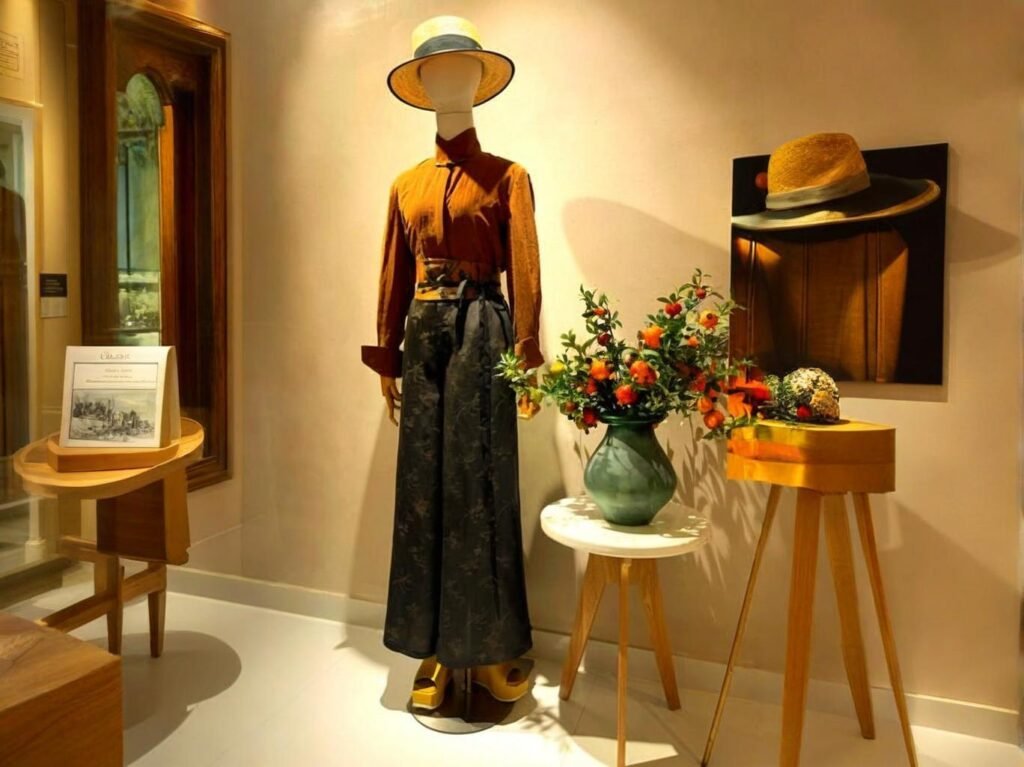
When searching for the best silk fabric manufacturers, quality and variety are two of the most critical factors that businesses should consider. Companies that offer a wide selection of fabrics, ranging from smooth charmeuse to luxurious brocades and chiffon, are in high demand. These manufacturers not only offer a variety of types of silk but also provide different finishes, such as matte, glossy, or textured, to meet specific industry requirements.
The flexibility and diverse selection of silk fabrics can significantly impact the final product’s aesthetic, functionality, and durability. As businesses grow increasingly focused on offering unique products that stand out in the marketplace, it becomes essential to collaborate with manufacturers that can provide diverse options in both quality and design.
Key Aspects of Quality and Variety:
The best Chinese silk manufacturers are those that offer multiple types of silk fabrics, along with the ability to customize finishes and patterns. The following aspects highlight the most important qualities businesses should look for:
Silk Types
The variety of silk types available plays a significant role in determining the texture, sheen, and appearance of the fabric. Leading manufacturers offer several types of silk, each suitable for different end-uses:
- Mulberry Silk: Known as the finest and most luxurious type of silk, mulberry silk is prized for its smooth texture and high-quality finish. It is derived from silkworms that are fed exclusively on mulberry leaves, which results in a soft, consistent texture. This silk is highly durable and is often used in high-end fashion and bedding.
- Tussah Silk: Tussah silk has a more rough and textured feel compared to mulberry silk. It is made from wild silkworms and has a slightly natural, rustic appearance, which makes it ideal for eco-friendly and bohemian-inspired designs. Tussah silk also has a more irregular texture, lending it a unique, organic look that appeals to designers of sustainable fashion and home decor.
- Charmeuse Silk: Characterized by its shiny surface and soft drape, charmeuse silk is often used in high-end eveningwear and bridal gowns. The fabric’s glossy finish and smooth texture make it highly coveted for luxurious clothing items, especially those requiring an elegant, fluid drape.
- Crepe de Chine Silk: Known for its lightweight and crinkled texture, crepe de chine silk offers a soft, flowing appearance and is commonly used in blouses, dresses, and scarves. Its texture gives it a subtle, almost vintage charm, making it perfect for both modern and retro-inspired designs.
Fabric Weight
The weight of the silk fabric determines its drape and durability, making it a key factor when selecting the right silk for specific uses. Leading manufacturers produce silks in a variety of weights:
- Lightweight Fabrics: Fabrics like chiffon and georgette are lightweight and have an airy, translucent quality. These fabrics are ideal for dresses, blouses, and scarves, where fluidity and movement are desired. Lightweight silks can be used for layering and create an ethereal look in fashion.
- Heavier Fabrics: Dupion silk and taffeta are examples of heavier fabrics that are durable and structured. They are often used in upholstery, wedding dresses, and luxury home decor. Heavier silks hold their shape well, making them ideal for structured garments and decorative elements like curtains or cushions.
Finishes and Customization
Customization is a significant factor for designers and brands who need unique and distinctive textiles. Leading manufacturers offer a variety of finishes and services, which can elevate the silk fabric’s look and functionality:
- Burn-Out Patterns: Manufacturers can create burn-out effects, where specific areas of the fabric are made sheer or patterned, adding an intricate touch to the silk. This technique is popular in fashion and decor for avant-garde designs.
- Dyeing Services: Silk fabrics can be dyed to match specific Pantone colors or unique custom shades. Manufacturers offering color matching ensure that businesses can have their products in the exact hue needed, whether for branding, collection themes, or seasonal color trends.
- Screen Printing & Digital Printing: For businesses that want to incorporate patterns or logos onto the fabric, screen printing and digital printing are essential options. Leading manufacturers offer high-definition printing services, allowing clients to create detailed, vibrant prints on silk fabrics.
- Embroidery and Other Customizations: Companies may also offer embroidery services, adding intricate thread designs or even logos to silk fabrics. These embellishments allow designers to create distinctive, branded textiles.
Case Study: Jiangsu Shengze Silk Group
Jiangsu Shengze Silk Group, one of the largest silk manufacturers in China, is a perfect example of a company that offers both high-quality materials and a wide variety of silk options. Known for their innovative approach and vast array of silk types, they cater to both the fashion and industrial sectors.
Jiangsu Shengze has earned a solid reputation for producing high-performance silk fabrics that are not only visually appealing but also durable and functional. These silks are used across various applications, including upholstery, fashion, and even automotive interiors. Their ability to offer a wide range of fabric weights and finishes makes them highly versatile for different design needs.
Focus on Innovation:
What sets Jiangsu Shengze apart is its continuous focus on innovation. By developing high-performance silk fabrics, they ensure that their silks are suitable for both luxurious fashion garments and industrial applications where durability and function are paramount.
The company has formed successful partnerships with global fashion brands, highlighting their ability to meet high standards for both quality and design flexibility. Their success story shows how well-established manufacturers can lead in both creativity and technical excellence.
How to Choose the Right Silk Fabric Supplier for Your Business?
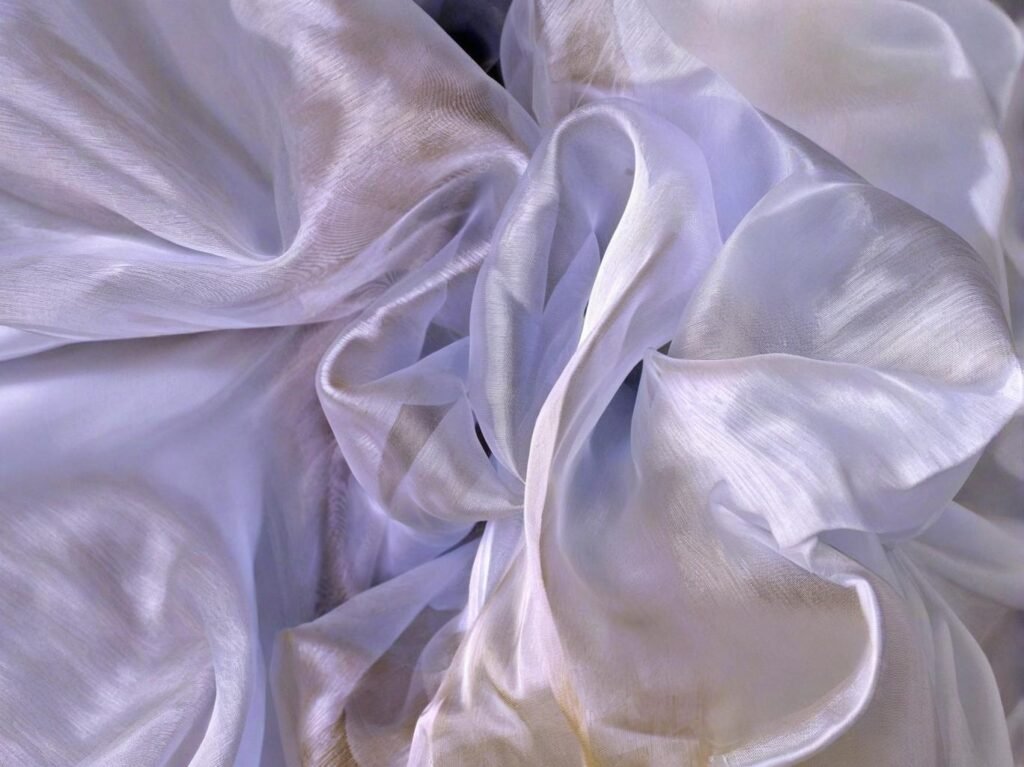
Selecting the right silk fabric supplier is a critical decision for any business that relies on high-quality textiles. Whether you are in the fashion, interior design, or upholstery industry, the supplier you choose can directly impact the quality of your final products. With numerous silk fabric suppliers available, it can be challenging to pinpoint which one will best meet your needs. However, by considering several key factors, you can make a more informed decision that will help ensure the success of your product lines and maintain the high standards your brand represents.
Key Factors to Consider When Choosing a Silk Fabric Supplier:
The right supplier should not only offer high-quality fabrics but also provide a range of services that align with your specific business requirements. Below are the crucial factors to consider when selecting a silk fabric supplier:
1. Product Range
A broad selection of fabrics is essential when choosing a silk fabric supplier. The best suppliers offer a variety of silk types, including mulberry silk, tussah silk, charmeuse silk, and crepe de chine.
- Variety of Silk Types: Make sure your supplier provides different types of silk suitable for various applications, whether you need smooth charmeuse for evening wear or rustic tussah silk for eco-friendly designs.
- Fabric Weight Options: Silks come in various weights, from lightweight chiffon to heavier dupion silks, allowing you to select the perfect fabric for your specific needs. A supplier with multiple weight options ensures that you can create diverse collections.
- Finish and Texture: Leading suppliers offer different finishes such as matte, glossy, or textured silk fabrics, adding versatility to your designs. Whether you require shiny silk for luxury garments or a more understated matte finish for home textiles, a wide range of finishes provides creative flexibility.
2. Quality Control
Quality control is one of the most important factors when selecting a silk fabric supplier. Reputable manufacturers should have stringent quality control procedures to ensure that the fabric you receive consistently meets high standards.
- Color Fastness: Ensure that the supplier has quality control measures in place to guarantee that the fabric’s color will not fade over time, even after washing or exposure to sunlight.
- Texture Consistency: The texture should remain consistent across the entire fabric batch. If you are using silk for garments, the feel of the fabric should be uniform, with no inconsistencies in its smoothness or quality.
- Durability Tests: Check that the supplier conducts durability tests to ensure the fabric can withstand regular use. For instance, test the fabric’s tear strength, abrasion resistance, and shrinkage properties. This is especially important for products like upholstery or silk used in outerwear.
3. Customization Capabilities
A strong silk fabric supplier should be able to offer a range of customization options to meet your specific design needs. Customization is crucial, especially for businesses that rely on unique fabrics or require personalized designs.
- Custom Dyeing: Many businesses need fabrics dyed to exact specifications. Choose a supplier who offers Pantone matching or other dyeing services to ensure that the fabric’s color matches your vision perfectly.
- Screen Printing and Digital Printing: The ability to print custom designs, patterns, or logos on silk fabric allows for branding and unique design opportunities. Whether you need intricate floral patterns or bold geometric designs, ensure that the supplier has experience in both screen printing and digital printing techniques.
- Fabric Embossing or Texturizing: For added depth or texture, look for a supplier who offers fabric embossing or texturizing services. This is a great option if you want your fabric to stand out and be distinct from other designs in the market.
4. Delivery and Lead Time
The ability to meet deadlines is crucial, especially for businesses that work on tight schedules, such as those with seasonal collections or event-driven launches. Choose a supplier who can provide reliable delivery timelines and ensure that they are able to meet lead time requirements.
- Delivery Timelines: Reliable suppliers will offer accurate shipping estimates and have a history of delivering on time. Make sure to establish clear expectations regarding production timelines and shipping.
- Flexibility with Lead Times: Suppliers who offer quick turnaround times for sample orders or rush orders can be invaluable, especially if you need to adjust your production plans at the last minute.
Real-World Example:
Consider the experience of ABC Fashion Designers, a fashion startup based in New York, who recently partnered with Szoneier Fabrics to source a custom line of silk dresses. Their decision to collaborate with Szoneier was based on several factors, including their ability to provide a wide variety of silk fabrics, their extensive customization options, and their reputation for timely delivery.
- Product Range: ABC Fashion Designers needed both lightweight chiffon and heavy dupion silk for their collection. Szoneier Fabrics provided the necessary silk types in the right weights, ensuring that each design was unique and met the stylistic needs of the collection.
- Customization: Szoneier offered custom screen printing services, allowing the designers to incorporate their unique floral patterns onto the silk fabric, giving the garments a distinctive look.
- Quality Control: The fabrics passed the designers’ quality control tests, including checks for color fastness, texture consistency, and durability. This ensured that their final product met both their aesthetic and functional needs.
The result was a successful launch of their silk dresses, which were featured in top fashion magazines. This collaboration is a prime example of how a well-chosen silk fabric supplier can contribute to the success of a product launch.
Expert Tip:
One effective way to evaluate a silk fabric supplier is by conducting a trial order. This allows you to assess their service quality, responsiveness, and ability to meet deadlines before committing to a large-scale order. Starting with a smaller order helps mitigate risks and provides a clear picture of the supplier’s capabilities in real-world conditions.
By placing a trial order, you can:
- Test the fabric’s quality.
- Ensure that the delivery timelines are met.
- Evaluate the supplier’s customer service.
In summary, choosing the right silk fabric supplier involves considering several factors such as product range, quality control, customization capabilities, and reliable delivery. A supplier who can meet your specific needs will help ensure that your business produces high-quality, innovative products that align with your brand values and customer expectations. Remember, starting with a trial order can provide valuable insights into their overall reliability and service.
Do Top Silk Manufacturers Provide Customization and Low MOQ Options?
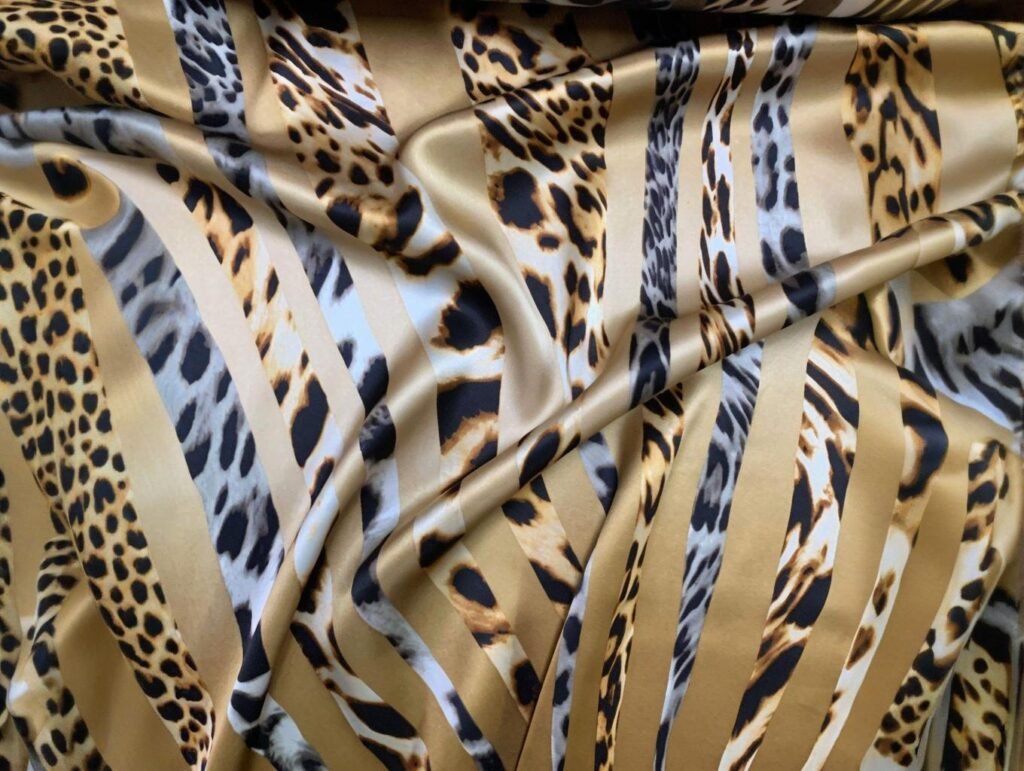
Customization and low Minimum Order Quantities (MOQ) have become increasingly important, particularly for small or niche businesses that need flexibility in sourcing. Traditionally, many suppliers require large minimum orders, which may not be suitable for smaller businesses or those testing new product lines. Fortunately, many of the leading silk fabric manufacturers in China now offer customization services and low MOQ options to accommodate businesses of all sizes. This flexibility allows businesses to experiment, innovate, and launch products without the financial burden of overstock.
How Customization Works:
Customization allows businesses to tailor the fabric to their exact needs, whether it’s for a special collection, a seasonal line, or a unique design. Here are some of the ways manufacturers offer customization services:
1. Fabric Dyeing and Printing
One of the most popular customization options is custom dyeing and printing. Leading silk manufacturers offer the ability to:
- Custom Dye Silk: Businesses can match their silk fabrics to Pantone colors or create their own custom shades. Whether you need rich, vibrant hues or subtle pastels, custom dyeing ensures your fabrics align perfectly with your brand’s aesthetic.
- Screen Printing: For designs and patterns, manufacturers provide screen printing services to apply intricate and detailed designs to the silk, making it an ideal choice for branding or creating distinctive fabric looks.
- Digital Printing: Digital printing offers high-resolution prints and enables companies to print complex patterns, logos, or photographic designs onto silk fabric, offering greater precision and versatility for unique and high-quality designs.
2. Custom Weaving and Embellishments
For brands seeking exclusive, high-end fabrics, custom weaving and embellishments are essential:
- Custom Weaving Patterns: Silk manufacturers can create unique woven patterns that give the fabric a distinct texture and aesthetic. This is particularly beneficial for designers seeking exclusive collections.
- Embellishments: Beyond basic fabric weaving, manufacturers offer the option to add embellishments like embroidery, sequins, rhinestones, and other decorative features. This provides an opportunity for brands to differentiate themselves with custom textures or intricate detailing.
3. Low MOQ (Minimum Order Quantities)
Many businesses, especially smaller brands or startups, are hesitant to commit to large orders due to cost concerns or the risks associated with overstocking. Fortunately, leading manufacturers now offer low MOQ options, which means businesses can place smaller orders for custom fabrics. This option is highly beneficial for brands with specific seasonal collections or limited-edition products, as it reduces upfront investment.
For example, businesses that want to test new products or launch seasonal lines can place smaller orders, allowing them to gauge market demand before scaling up production.
Case Study:
Luxe Couture, a small fashion label based in Paris, wanted to create a unique silk collection for an upcoming spring season. They reached out to Szoneier Fabrics because of their low MOQ options and ability to custom print and dye silk to the brand’s specific design needs.
- Customization: Luxe Couture worked with Szoneier to create a vibrant floral pattern on high-quality mulberry silk using digital printing. This allowed them to produce a small batch of exclusive dresses with custom patterns that perfectly matched their vision for the collection.
- Low MOQ: Instead of committing to large orders, Luxe Couture only needed 100 meters of silk fabric, allowing them to produce their first collection with minimal financial risk.
The collection was a huge success, and the dresses were featured in major fashion magazines. Luxe Couture was able to gain the confidence of investors and expand their offerings in subsequent seasons thanks to Szoneier’s flexible MOQs and high-quality customization options.
Why It Matters for Small Businesses:
Customization and low MOQs are game-changers for small businesses, startups, and niche brands that might not have the budget or demand for large quantities of fabric. Here’s why these options are so crucial:
1. Opportunity to Create Unique, High-Quality Products
Customization allows small businesses to create distinctive, high-quality products that stand out in the market. Whether you’re a luxury fashion brand, an eco-conscious startup, or a home decor company, offering exclusive, customized silk fabrics can give you a competitive edge.
2. Lower Financial Risk
By offering low MOQs, manufacturers allow small businesses to test the waters before committing to larger orders. This reduces the financial risk associated with overproduction, especially for businesses with seasonal or one-off collections. Instead of ordering thousands of meters of fabric, small businesses can start small and scale up production based on demand.
3. Flexibility and Innovation
With low MOQs, businesses can explore innovative designs and test new fabrics without worrying about large, unsold stock. Whether experimenting with a new dye, pattern design, or fabric finish, low MOQs provide flexibility for companies to create unique pieces or even limited edition lines.
Dive Deeper into Customization and Low MOQ Options
The ability to customize silk fabric and place low MOQ orders has transformed the way businesses approach sourcing materials. Here are more details on how customization works and why low MOQs are essential:
Custom Fabric Options Available:
- Custom Color Matching: Many silk fabric manufacturers offer Pantone color matching, ensuring that the silk fabric produced is exactly the right shade for your brand. This is essential for businesses that rely on a specific color palette for their collections.
- Pattern Design: Whether you require floral prints, geometric patterns, or custom logos, manufacturers can reproduce intricate and detailed designs. The ability to print these patterns on silk allows businesses to offer highly personalized fabrics that align with their branding.
- Texture Customization: Silk fabric isn’t just about color; its texture plays a vital role in its appeal. Manufacturers can create different finishes, such as glossy charmeuse or matte chiffon, depending on your desired aesthetic and product type.
Low MOQ Benefits:
Cost Efficiency for Startups:
Low MOQ options allow startups to order smaller quantities of custom silk at affordable prices. This eliminates the need to make a huge financial commitment upfront and allows businesses to adjust their production needs based on demand.
Flexibility:
Low MOQs offer businesses the freedom to experiment with different styles and designs without the risk of overstocking. This is particularly beneficial for businesses that have seasonal collections or limited-edition products.
Risk Reduction:
When businesses are not locked into high MOQ orders, they can minimize the risk of overproduction. This is especially important for startups that are unsure of how a new design or fabric will perform in the market.
Real-Life Example:
One successful partnership was with Fashionista Limited, a luxury brand looking to create a limited-edition silk scarf collection for the holiday season. With the low MOQ of 50 scarves, they were able to create exclusive, custom-designed scarves using high-quality silk and intricate screen printing. The small batch was a huge success, with scarves selling out quickly. This success prompted Fashionista Limited to increase their order volume for subsequent seasons, thanks to the flexibility of their supplier.
customization and low MOQ options are crucial for small businesses, allowing them to create exclusive, high-quality products while reducing financial risks. These flexible options make it easier to test new designs, cater to specific customer demands, and gradually scale production. By partnering with silk fabric suppliers that offer these options, businesses can ensure their collections are unique, creative, and high in demand.
Is It Cost-Effective to Source Silk Fabrics Directly from China?
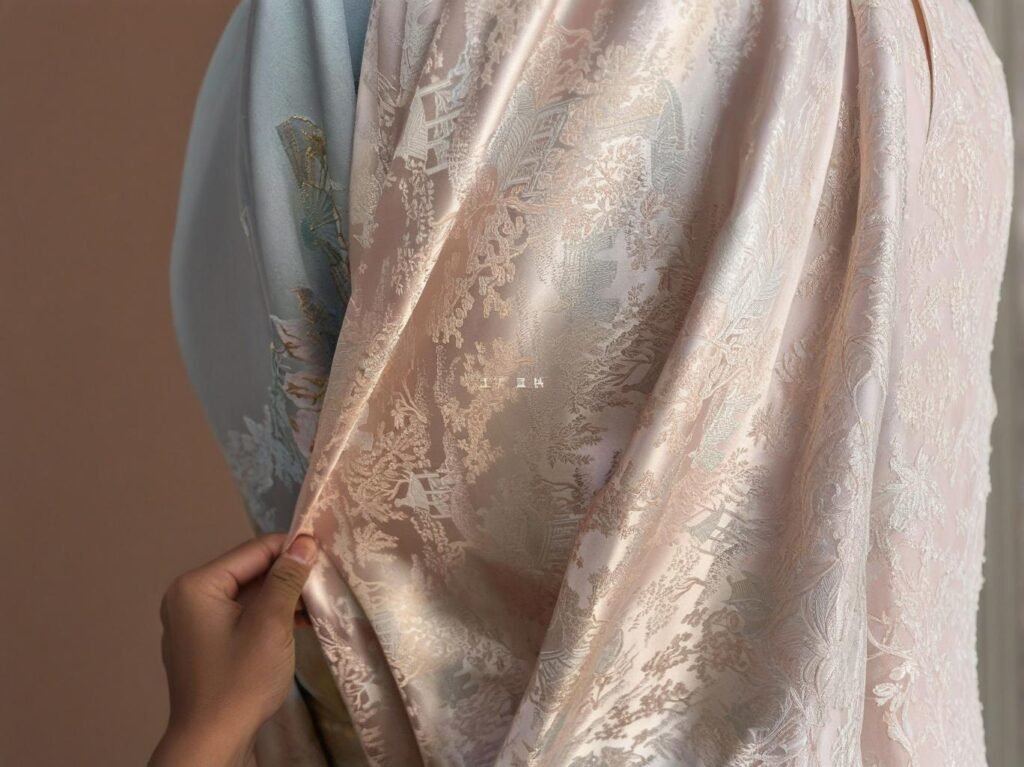
For many businesses, sourcing silk fabrics directly from China presents a cost-effective way to reduce production costs. China, as the world’s largest producer and exporter of silk, has established itself as a global leader in silk manufacturing, offering competitive pricing on high-quality silk fabrics. However, the decision to source from China requires careful consideration of multiple factors, including production volume, shipping costs, tariffs, and supplier reliability. While sourcing from China offers significant savings, businesses must weigh these advantages against the potential drawbacks.
The key question businesses often face is whether sourcing silk fabrics directly from China will be more cost-effective in the long run. The following breakdown of costs will help provide clarity on this matter.
Cost Breakdown of Sourcing Silk Fabrics from China:
Several factors contribute to the overall cost-effectiveness of sourcing silk fabrics from China. Let’s examine each element to understand the true costs involved.
1. Raw Material Costs
China is the world’s largest producer of silk, with extensive silk farms spread across the country. The availability of raw materials in China significantly lowers the overall cost of production. This gives manufacturers easy access to low-cost raw materials, which is particularly important for companies seeking to reduce their fabric sourcing costs.
- Mulberry Silk: As the highest quality silk, mulberry silk is in high demand worldwide. In China, mulberry silk is produced in large quantities, which drives down material costs. Since Chinese manufacturers have access to abundant mulberry silk, they can offer competitive pricing on this premium fabric.
- Tussah and Wild Silk: While mulberry silk is the top-tier fabric, tussah silk and wild silk are also produced in significant quantities. These types of silk are generally more affordable and still offer great quality for specific designs, such as eco-friendly products or rustic apparel.
By sourcing directly from China, businesses can avoid the markups added by intermediaries and secure high-quality raw materials at a lower price compared to suppliers in other regions.
2. Labor Costs
Labor costs in China are historically lower than those in many Western countries. This lower labor cost translates into more competitive pricing for high-quality silk production. Chinese silk manufacturers can maintain competitive pricing while ensuring high standards of craftsmanship.
- Lower Labor Costs: The lower cost of labor enables Chinese manufacturers to produce silk fabrics at more affordable rates, which benefits businesses looking to keep their production costs down.
- Rising Labor Costs: While labor costs in China have risen over the years due to the country’s growing economy, they remain significantly lower than in countries like the U.S. or Europe, making China an attractive source for fabric production.
3. Shipping and Tariffs
While the lower production costs in China are appealing, businesses need to account for shipping costs and tariffs, which can add significant expenses to the overall cost of sourcing silk.
- Shipping Costs: Shipping costs depend on the volume of silk being imported, the destination country, and the chosen shipping method. Typically, sea freight is the most cost-effective option for bulk orders, but air freight can also be used for faster deliveries at higher costs.
- Tariffs and Import Duties: For businesses sourcing silk fabrics from China to markets like the U.S. or Europe, tariffs and import duties may apply. The U.S.-China trade war has introduced higher tariffs on some silk products, which can impact the overall cost-effectiveness. Businesses should carefully monitor changes in tariff policies to understand how this affects their costs.
Despite these added expenses, businesses often find that the lower material costs and labor savings still outweigh the extra shipping and tariff fees.
4. Economies of Scale
One of the main benefits of working with Chinese manufacturers is the economies of scale. The larger the order, the more cost-effective the unit price becomes.
- Bulk Discounts: Large orders allow businesses to take advantage of bulk discounts, reducing the per-unit cost of silk fabrics. For businesses that require a high volume of silk for ongoing production, economies of scale can significantly lower the cost of materials.
- Low MOQ Options: For businesses that don’t require large quantities, many Chinese silk manufacturers offer low MOQ (Minimum Order Quantity) options, allowing smaller businesses to test products without making significant financial commitments. While the unit price may be slightly higher for smaller orders, the ability to order smaller quantities allows businesses to avoid overstocking.
Case Study:
Brand X Apparel, a luxury fashion brand based in New York, decided to source mulberry silk directly from China to reduce the cost of producing their high-end fashion line. Initially concerned about shipping costs and tariffs, the brand found that the lower material costs of sourcing directly from Chinese manufacturers, combined with access to high-quality mulberry silk, helped maintain profitability.
- Material Costs: The cost savings on mulberry silk were substantial, allowing the brand to produce luxurious garments at a lower price point than if they sourced from Western suppliers.
- Shipping and Tariffs: While shipping costs added some expenses, bulk discounts and the affordable raw material prices still allowed the brand to maintain competitive pricing.
Ultimately, the lower cost of silk outweighed the additional costs of shipping and tariffs, allowing Brand X Apparel to produce their garments with premium fabrics at competitive prices, while still maintaining high standards of luxury and quality.
Key Considerations:
While sourcing silk fabrics from China can offer significant cost savings, businesses should keep the following factors in mind to fully understand the overall cost-effectiveness:
1. Quantity of Order
The size of the order plays a crucial role in determining whether sourcing from China is cost-effective.
- Larger Orders: For larger orders, businesses will benefit from bulk pricing, which offers significant discounts. The higher the quantity ordered, the more businesses save on the unit cost.
- Smaller Orders: For businesses with smaller production runs, the cost of smaller MOQ orders might be slightly higher per unit. However, many Chinese manufacturers offer low MOQ options, so businesses can still access affordable silk without over-committing to large quantities.
2. Supplier Relationship
Establishing a strong, long-term relationship with a supplier in China can lead to even greater cost savings over time.
- Negotiating Better Terms: Over time, businesses that maintain consistent relationships with their suppliers can negotiate better pricing, faster lead times, and even customization options that suit their production needs.
- Communication and Reliability: Trusting a supplier and maintaining clear communication is essential for ensuring consistent product quality and timely delivery, which ultimately impacts overall cost-effectiveness.
sourcing silk fabrics directly from China can indeed be a cost-effective solution for businesses, especially when considering the lower raw material costs, affordable labor, and economies of scale. While shipping and tariffs are additional expenses, these are often outweighed by the savings on fabric costs and the ability to source high-quality silk at competitive prices. By carefully evaluating the factors involved, businesses can make informed decisions and enjoy significant cost benefits when sourcing silk directly from China.
Are There Sustainable and Eco-Friendly Silk Fabric Manufacturers in China?
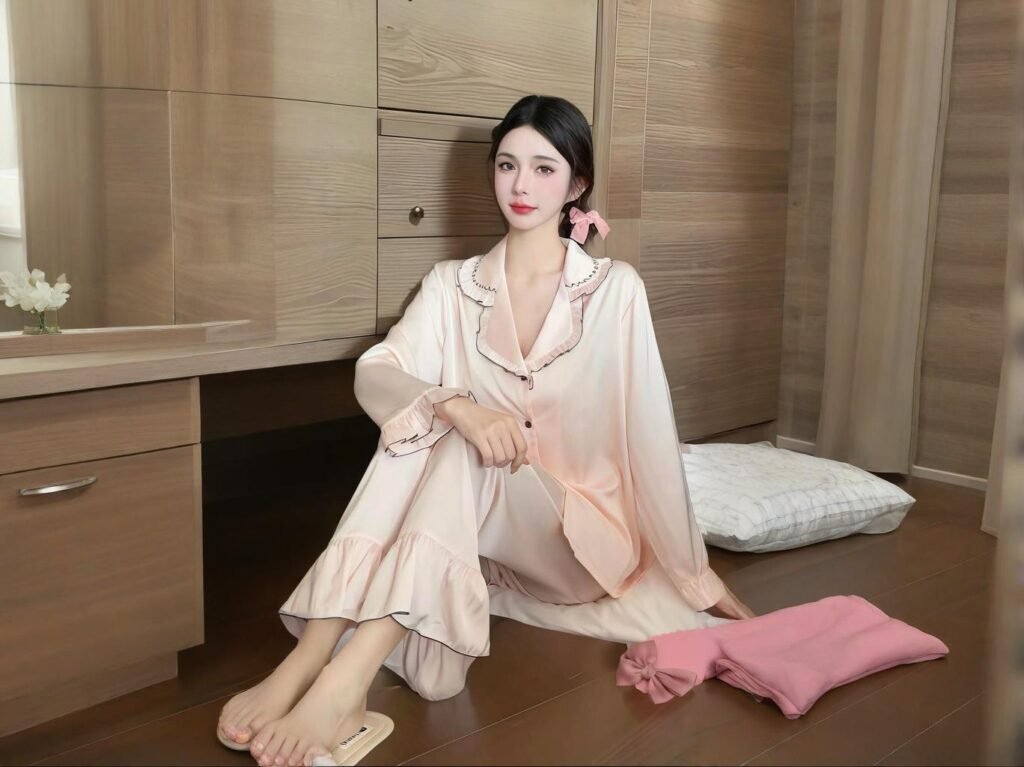
Sustainability has become a top priority for businesses and consumers alike, particularly in the textile industry. With growing awareness about the environmental impact of traditional manufacturing processes, it’s crucial to understand how the silk industry in China is evolving towards more eco-friendly practices. Historically, silk production has been known for being resource-intensive, requiring large amounts of water and energy. However, many Chinese silk manufacturers are making significant strides toward sustainable and eco-conscious production methods.
As businesses and consumers become more environmentally aware, the demand for sustainable silk fabrics is on the rise. This shift in demand has prompted many manufacturers to incorporate green practices into their production, from organic farming to innovative dyeing techniques and energy-efficient machinery.
Sustainable Silk Manufacturing in China:
Leading silk manufacturers in China are adopting a variety of sustainable practices to reduce their environmental impact. Here are some of the key eco-friendly approaches that are being embraced:
1. Organic Silk Production
One of the primary shifts towards sustainability in the silk industry is the use of organic farming practices. Many Chinese silk producers are now cultivating organic mulberry trees that are free from synthetic pesticides and chemicals. By avoiding these harmful substances, organic silk farming not only protects the environment but also reduces health risks for the workers involved.
- Benefits of Organic Silk: Organic silk is produced without the use of harmful pesticides and fertilizers, making it a more sustainable and healthier alternative to conventionally farmed silk. This silk is also biodegradable and leaves a much smaller environmental footprint compared to synthetically produced fabrics.
- Eco-Friendly Farming Methods: Organic mulberry farming supports biodiversity and soil health, contributing to healthier ecosystems. The absence of harmful chemicals makes the production process more environmentally responsible.
2. Water and Energy Efficiency
Silk production traditionally consumes large amounts of water and energy. However, leading manufacturers are investing in technologies to make the process more resource-efficient.
- Water Recycling Systems: Water is a critical resource in silk production, used extensively in the reeling process and during dyeing. Many manufacturers are now implementing water recycling systems that allow for closed-loop water use, ensuring that the same water is used repeatedly with minimal waste.
- Energy-Efficient Machinery: To reduce energy consumption, manufacturers are transitioning to energy-efficient machinery and incorporating solar power in their factories. By adopting renewable energy sources, these manufacturers can reduce their carbon footprint and contribute to a cleaner environment.
These changes allow for sustainable silk production that conserves water and energy, significantly reducing the environmental impact.
3. Eco-Friendly Dyeing and Printing
Traditional silk dyeing processes often involve toxic chemicals and water pollution, making it a highly resource-intensive process. However, many manufacturers in China are turning to eco-friendly dyeing techniques that use natural dyes or water-based dyes instead of harmful synthetic chemicals.
- Natural Dyes: Some manufacturers use plant-based dyes, which are biodegradable and less harmful to both the environment and human health. These dyes come from natural sources like plants, minerals, and insects, making them a more sustainable option for coloring silk.
- Water-Based Dyes: Water-based dyeing methods use fewer toxic chemicals and require less water compared to traditional dyeing processes. This makes the dyeing process safer for workers and helps minimize environmental pollution.
By adopting these eco-friendly techniques, manufacturers are not only contributing to a cleaner environment but also meeting the growing demand for sustainable fashion.
4. Recycled Silk
Recycling is becoming an increasingly popular method of creating sustainable fabrics. Several manufacturers in China are now producing recycled silk by repurposing unused or leftover silk fibers from production. This option helps to reduce waste in the textile industry and offers an eco-friendly alternative to new silk.
- Benefits of Recycled Silk: Using recycled silk reduces the need for new raw materials, thereby conserving natural resources. The resulting fabric maintains the luxurious feel and quality of new silk but with a reduced environmental impact.
Recycled silk is gaining popularity among eco-conscious brands who want to offer sustainable fashion while maintaining the elegance and quality of silk products.
Case Study:
Green Fabrics Inc., a sustainable fashion brand, partnered with EcoSilk Ltd., a Chinese manufacturer known for its eco-friendly production practices. EcoSilk Ltd. uses organic mulberry farming, non-toxic dyes, and solar-powered factories to produce silk fabrics that are both luxurious and sustainable.
- Organic Silk Farming: EcoSilk Ltd. exclusively uses organic mulberry farms, ensuring that the silk is free from pesticides and harmful chemicals.
- Non-Toxic Dyes: The company uses plant-based and water-based dyes, reducing the environmental impact of the dyeing process.
- Solar-Powered Facilities: EcoSilk Ltd. has invested in solar power for its production facilities, reducing reliance on fossil fuels and minimizing energy consumption.
By partnering with EcoSilk, Green Fabrics Inc. was able to create a sustainable silk collection that met consumer demand for eco-conscious fashion. The collection featured elegant and luxurious designs while adhering to strict sustainability standards, helping the brand stand out in a crowded market of eco-friendly fashion.
The Growing Trend of Sustainable Silk:
Sustainability is no longer just a trend; it has become a fundamental part of brand identity for many fashion and textile companies. As consumers become more aware of the environmental impact of their purchases, businesses are increasingly looking for ways to source eco-friendly materials.
- Sustainable Sourcing: More and more businesses are prioritizing sustainable sourcing of materials like silk, ensuring that the fabrics they use are produced in an environmentally responsible manner.
- Eco-Conscious Consumers: Consumers are actively seeking brands that prioritize sustainability. By emphasizing eco-friendly silk sourcing, businesses can attract this growing segment of eco-conscious consumers.
For companies, adopting sustainable practices isn’t just about reducing environmental impact; it’s also a way to differentiate themselves in the market. Eco-friendly sourcing of silk gives businesses a competitive advantage by aligning with the values of today’s environmentally conscious consumer.
Dive Deeper into Sustainable Silk Manufacturing
1. Certification and Standards:
To ensure the credibility of eco-friendly practices, many silk manufacturers in China adhere to global sustainability standards, including:
- OEKO-TEX®: A certification that ensures the absence of harmful chemicals in textiles, guaranteeing safety for consumers and the environment.
- GOTS (Global Organic Textile Standard): This certification ensures that the silk is made from organic materials and processed using sustainable methods.
- Fair Trade: Ensuring that workers are treated fairly and compensated appropriately, the Fair Trade certification is an important aspect of sustainability that focuses on social responsibility.
These certifications validate the manufacturer’s commitment to sustainability, ethics, and quality control, and they can help businesses confidently partner with suppliers that align with their values.
2. Benefits of Sustainable Silk:
- Reduced Environmental Impact: Sustainable silk production helps minimize pollution, water waste, and chemical runoff, directly contributing to the protection of natural resources.
- Healthier Products: Silk that is free from harmful chemicals is safer for both the workers involved in production and the consumers who wear or use the final products.
- Marketing Advantage: Sustainable sourcing offers brands the opportunity to market themselves as eco-conscious and ethical, which can be a powerful selling point in today’s competitive market.
3. The Future of Sustainable Silk:
As the demand for eco-friendly fabrics continues to rise, the silk industry in China is likely to embrace more sustainable production methods. It is expected that more manufacturers will transition to eco-friendly practices as global awareness of environmental issues increases, making sustainable silk a key material in the future of fashion and textiles.
What Are the Key Factors to Consider When Partnering with a Silk Fabric Manufacturer?

When partnering with a silk fabric manufacturer, it is critical to understand several key factors that will contribute to a successful and lasting collaboration. Price and quality are important, but there are other crucial aspects to consider, such as production capacity, reliability, customer service, and the manufacturer’s ability to meet your business’s long-term needs. These factors are essential for ensuring smooth operations, maintaining high-quality standards, and ultimately building a strong and productive business relationship.
Building a relationship with a trusted silk fabric supplier is a significant decision, as it directly impacts the quality, delivery, and cost-efficiency of your products. By understanding these critical factors, you can make informed decisions that will enhance your business growth and the quality of your final product.
Key Factors to Consider:
Here are the key aspects to evaluate when partnering with a silk fabric manufacturer to ensure a successful and long-term relationship:
1. Production Capacity
The production capacity of a manufacturer is one of the first and most important factors to consider. Ensure that the manufacturer you are considering has the ability to handle your order volume, whether it’s for a small test run or bulk production.
- Scalability: A reliable silk fabric manufacturer should have the ability to scale production based on your needs. This means they should be able to manage large orders efficiently while maintaining quality control. They should also be flexible enough to accommodate seasonal spikes or new product launches.
- Consistency: Production capacity is not just about the quantity but also about maintaining consistency in the final product. Whether you are ordering 500 meters or 50,000 meters, the fabric should meet the same high-quality standards each time.
By assessing the manufacturer’s production capacity, you can ensure they can meet both your short-term and long-term needs.
2. Quality Assurance Processes
Quality assurance is another critical aspect to evaluate. High-quality silk is essential for any business looking to offer premium products. A good manufacturer will have a robust quality control process to ensure consistency and compliance with your specifications.
- Consistent Fabric Quality: Leading manufacturers perform regular checks for color consistency, weight, texture, and finish to ensure that every batch of fabric meets the specified quality standards.
- Inspection Before Shipping: The manufacturer should carry out thorough pre-shipping inspections to identify any potential defects. This could include testing for shrinkage, color fastness, and material strength.
- Global Standards: Ensure that the manufacturer adheres to internationally recognized quality standards (e.g., ISO certifications). This provides confidence that the fabric will meet the high standards required by your business and your customers.
By choosing a manufacturer with rigorous quality assurance processes, you can ensure that the silk fabric you receive will meet your expectations and help build your brand’s reputation for quality.
3. Customer Service and Communication
Effective customer service and communication are crucial for a smooth and successful partnership. You need a manufacturer who is responsive, transparent, and proactive in addressing any potential concerns or issues.
- Responsive and Transparent Communication: The manufacturer should provide clear and timely updates regarding production timelines, order status, and any potential delays. They should be open to feedback and willing to adapt to your requirements, ensuring that you’re always in the loop.
- After-Sales Support: Good customer service goes beyond the point of sale. The manufacturer should be willing to assist with any issues after delivery, such as fabric defects or shipping discrepancies. A supplier who values long-term relationships will provide ongoing support to ensure your satisfaction.
By prioritizing strong communication and customer service, you can avoid misunderstandings and resolve issues quickly, leading to smoother collaboration and consistent product quality.
4. Delivery Timelines and Flexibility
Meeting deadlines is crucial for businesses, particularly those working on tight schedules or seasonal collections. A manufacturer’s ability to deliver products on time is a key factor in maintaining your business’s timeliness and reliability.
- Reliable Delivery Times: A reputable manufacturer will provide you with accurate delivery timelines and consistently meet them. Delays in production or delivery can lead to missed opportunities and disrupt your business operations.
- Flexibility with Urgent Orders: In addition to regular lead times, it is essential that the manufacturer has the ability to handle urgent orders or accommodate last-minute design changes. Manufacturers who are flexible and responsive to unexpected demands will be invaluable partners in a fast-paced industry.
Ensure that your manufacturer has a track record of meeting deadlines, especially for businesses with frequent product launches or seasonal collections.
5. Sustainability Practices
As sustainability becomes a major concern for businesses worldwide, partnering with a manufacturer who practices eco-friendly and ethical production methods is increasingly important. Many consumers now expect the brands they support to make a positive environmental impact.
- Organic Materials: Manufacturers who use organic silk produced without harmful chemicals can help you create more sustainable products. Additionally, some manufacturers use natural dyes and recycled silk in their production processes, reducing waste and minimizing their environmental footprint.
- Waste Reduction: Some silk manufacturers use water recycling systems and energy-efficient machinery to minimize their environmental impact. These manufacturers also focus on reducing waste during production, creating more sustainable practices that align with eco-conscious values.
- Fair Trade Practices: Look for manufacturers who offer Fair Trade certified silk, ensuring that workers are treated fairly, paid appropriately, and work in safe conditions. This not only helps with brand credibility but also contributes positively to the well-being of workers in the silk production process.
Sourcing from sustainable manufacturers not only supports your brand’s commitment to eco-conscious practices, but it also appeals to eco-conscious consumers who are increasingly looking to make environmentally responsible choices.
Case Study:
Fashion Forward, a luxury fashion brand based in Europe, experienced delays and quality issues with its previous silk fabric supplier. After switching to Szoneier Fabrics, they were able to streamline their production and meet deadlines consistently.
- Production Capacity: Szoneier was able to accommodate Fashion Forward’s order size, ensuring high-quality silk production for new seasonal collections.
- Quality Control: Fashion Forward was impressed with Szoneier’s rigorous quality control processes, ensuring that each batch of silk fabric met the brand’s exact standards.
- Communication: Fashion Forward appreciated the clear and transparent communication from Szoneier, which helped them stay informed throughout the entire production process. They also valued Szoneier’s commitment to sustainability, as the manufacturer used organic mulberry farming and eco-friendly dyes.
This partnership allowed Fashion Forward to launch its silk blouses on time, meeting the demand for luxury fashion while maintaining high-quality standards and environmental responsibility.
Why These Factors Matter:
The factors outlined above—production capacity, quality assurance, communication, delivery timelines, and sustainability practices—are all essential for building a successful, long-term partnership with a silk fabric manufacturer. By carefully considering these aspects, you can ensure that your supplier is a reliable partner who helps you deliver high-quality products on time while supporting your business values and brand reputation.
By selecting a manufacturer who aligns with your business needs, you not only ensure consistency and timeliness, but also position your brand for long-term growth and success. The right supplier relationship is a powerful asset that can enhance product quality, streamline production, and help you stay ahead in a competitive marketplace.
How to Establish a Successful Partnership with a Chinese Silk Fabric Supplier?

Building a successful and long-lasting partnership with a Chinese silk fabric supplier is crucial for any business that relies on high-quality textiles. Selecting the right supplier goes beyond just placing an order—it’s about fostering a mutually beneficial relationship that encourages trust, collaboration, and continuous improvement. Establishing such a partnership takes time and effort, but it can significantly impact the long-term success of your business.
By focusing on key principles of effective collaboration, you can develop a partnership that benefits both parties, reduces risks, and ensures consistent quality and timely delivery.
Steps to Establish a Strong Partnership:
The process of building a strong partnership with a silk fabric supplier involves several important steps. These steps ensure that both parties align on expectations and work together effectively to meet your business needs.
1. Due Diligence
The first step in building a successful partnership is conducting thorough due diligence before entering into a relationship with a supplier. This will help you assess whether a particular supplier can meet your business’s needs, both in terms of quality and operational efficiency.
- Research and Reputation: Look for manufacturers with a proven track record of successfully delivering high-quality silk fabrics. You can assess their reputation by reading reviews, requesting references from other clients, or checking case studies of their past work.
- Request Samples: Before committing to a long-term partnership, always ask for samples of the silk fabric you intend to order. This gives you the opportunity to test the fabric’s quality, texture, color fastness, and dye stability.
By conducting thorough due diligence, you can avoid potential issues that could arise later and choose a supplier that is reliable and capable of delivering what you need.
2. Clear Expectations and Communication
Establishing clear expectations from the outset is essential for the success of any partnership. Be transparent about your business requirements, timeline, and any specific preferences you may have.
- Define Product Specifications: Discuss the specifics of your fabric needs, including the type of silk (mulberry, charmeuse, etc.), desired fabric weight, and finishes (dyeing, printing, or weaving).
- Clarify Lead Times: Establish realistic lead times for production and delivery, and ensure both parties understand these timelines.
- Payment Terms and Conditions: Agree on payment terms, such as upfront deposits, installment payments, or payment upon delivery. Clear financial terms help avoid misunderstandings in the future.
Clear and consistent communication throughout the partnership is vital for minimizing confusion and addressing issues quickly when they arise.
3. Negotiate Terms Fairly
Negotiation is a natural part of any business transaction. While it’s essential to secure the best possible price, it’s equally important to ensure that the terms of the agreement are fair for both parties.
- Minimum Order Quantities (MOQs): Negotiate MOQs that fit your business’s needs. If your business is a smaller or niche brand, negotiate with the manufacturer to offer low MOQ options, which will allow you to place smaller orders without compromising on quality or pricing.
- Customization and Flexibility: Negotiate terms related to customization (e.g., custom dyeing, pattern designs, and silk finishes). A flexible manufacturer who can meet your specific design needs will give your products a competitive edge in the market.
- Shipping and Delivery: Make sure to agree on shipping terms and ensure that the manufacturer is capable of meeting deadlines, especially for seasonal collections or time-sensitive products.
By negotiating fairly, both parties can feel confident in the partnership and committed to the long-term success of the collaboration.
4. Start with a Small Order
Before committing to a large-scale order, it’s advisable to start with a small test order to evaluate the supplier’s ability to deliver on your expectations. This step is crucial for assessing their production quality, delivery timelines, and customer service.
- Evaluate Product Quality: Review the test order to ensure the fabric meets your specifications and quality standards. Check for consistency in color, texture, and finish.
- Assess Delivery Timeliness: Ensure that the supplier can meet the agreed-upon delivery timelines. Late deliveries can disrupt your production schedule and impact your business operations.
- Customer Support: Evaluate how well the supplier responds to any questions or concerns you may have during the ordering process. Strong customer service is a sign of a reliable supplier who is committed to building a positive long-term relationship.
Starting with a small order allows you to gauge the supplier’s capabilities and avoid the risk of committing to a large volume without fully understanding their operational strengths.
5. Maintain Regular Communication
Once the partnership is established, maintaining regular communication is key to ensuring smooth operations and building a strong long-term relationship. Transparent and proactive communication ensures that any issues are addressed promptly and helps avoid potential misunderstandings.
- Frequent Updates: Ask for regular updates on the production process, including quality checks and shipping timelines. This allows you to stay informed and make adjustments if necessary.
- Addressing Issues: Be open about any challenges or issues that arise during production. Maintaining a constructive dialogue helps find solutions and keeps the relationship positive.
- Long-Term Collaboration: Keep the lines of communication open beyond the initial order. Successful partnerships thrive on ongoing conversations, and regular communication helps strengthen the relationship over time.
Case Study:
Boutique Belle, a luxury fashion retailer based in the U.S., faced significant challenges when trying to find a reliable silk fabric supplier for their new collection of silk scarves. After a disappointing experience with a previous supplier, they decided to partner with Shenzhen Silk Company, a trusted Chinese manufacturer known for its high-quality silk fabrics and reliability.
- Small Order Start: Boutique Belle began with a small order of 100 meters of silk fabric, ensuring that the manufacturer could meet their quality and timing requirements.
- Quality Assurance: Shenzhen Silk Company exceeded expectations with superior fabric quality and timely delivery. The silk was consistent in color, texture, and finish, meeting the high standards Boutique Belle required for their luxury scarves.
- Building Trust: Over time, the partnership grew stronger. Shenzhen Silk Company’s transparent communication, flexible terms, and high-quality products helped build a long-term relationship. Boutique Belle increased their orders for future collections and continued to rely on Shenzhen Silk Company for future silk fabric needs.
Expert Tips:
To establish a successful partnership with a Chinese silk fabric supplier, consider the following tips:
- Start with a Trial Order: A small, manageable trial order helps evaluate the supplier’s ability to deliver on quality and timelines, minimizing risks.
- Be Transparent: Openly communicate your needs, business goals, and any special requirements from the beginning to avoid misunderstandings.
- Evaluate Their Facilities: If possible, visit the supplier’s facilities or arrange for a third-party audit. This gives you confidence in their operations, production capacity, and ability to meet your specifications.
- Maintain a Collaborative Approach: Foster a collaborative relationship with the supplier. Establishing trust and mutual respect ensures smoother cooperation and strengthens the partnership over time.
Dive Deeper into Building Successful Partnerships
1. The Importance of a Solid Contract:
A clear and detailed contract is essential to prevent misunderstandings and ensure that both parties meet their responsibilities. The contract should outline important terms such as product specifications, quality standards, delivery timelines, payment terms, and any additional services (e.g., customization). It serves as a guide for both parties and provides legal protection in case of disputes.
2. Long-Term Collaboration:
Building a long-term collaboration with your silk fabric supplier has several benefits. Repeated business allows you to negotiate better prices and improve production terms over time. Strong partnerships also encourage innovation and provide opportunities for new projects, making the relationship more productive for both parties.
3. Conflict Resolution Strategies:
While disagreements may arise during production, having a clear plan for conflict resolution is essential. Whether it’s a misunderstanding about quality or delays in delivery, it’s important to handle disputes professionally. Establishing a dispute resolution process upfront, such as regular check-ins or mediated meetings, helps prevent conflicts from escalating and ensures that both parties are satisfied with the outcome.
Choosing the right silk fabric manufacturer and establishing a strong, transparent partnership is crucial for businesses that rely on high-quality materials. By focusing on clear expectations, negotiating fair terms, and maintaining regular communication, businesses can build lasting relationships that foster long-term growth. Through strategic partnerships, businesses can ensure consistent product quality, timely delivery, and a seamless manufacturing process that will benefit their brand for years to come.
For businesses looking for a trusted partner in silk fabrics, Szoneier Fabrics offers customized solutions, competitive pricing, and a commitment to quality and sustainability. Contact us today to inquire about our silk fabric offerings and take the next step in creating exceptional products for your business!

